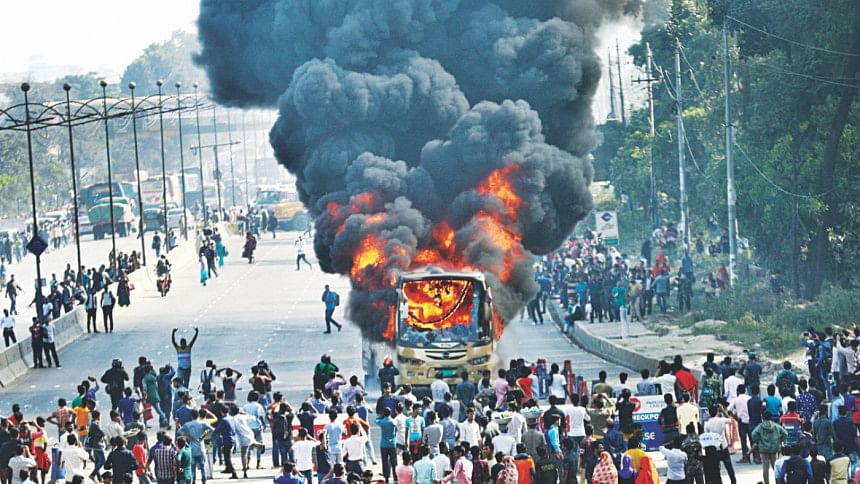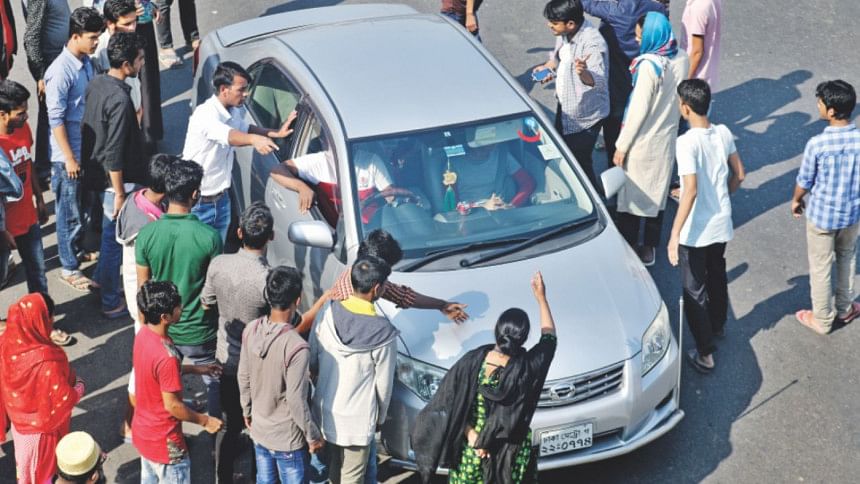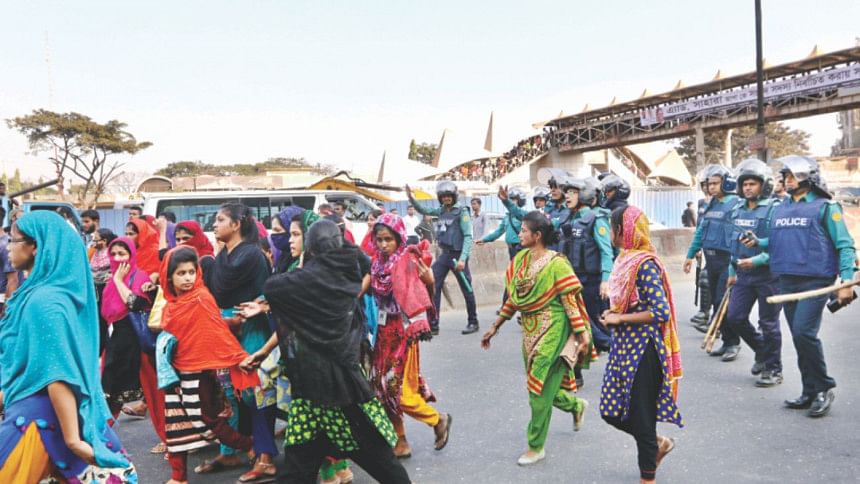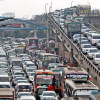RMG workers' wage demo continues

Around 3,000 garment workers blocked the Dhaka-Mymensingh highway at Uttara in the city for five hours yesterday on the second consecutive day of their protest over the disparity in pay in the new wage structure.
Thousands of passengers suffered from a massive tailback in the area as the road was blocked for five hours. The demonstration took an ugly turn when some protesters burnt a passenger bus.
Workers said the protest arose due to a disparity in the raise of wages among the different grades in the latest wage gazette for the garment workers.
Nazma Akter, president of the Sammilito Garment Sramik Federation, a workers' rights body, said some of the factories had paid the wages for the month of December to the workers but there was a huge disparity in the pay.
“This is the main reason for the current unrest,” Akter said.
She also added that in some cases the management of the factories paid the workers following the old pay structure.
The new wage was made effective from December 1.
However, it came with a huge difference in the wage hike among the third and fourth grades, as their pay did not rise like that of entry-level workers.

The workers said the monthly wage for those in the seventh grade, who are entry-level workers, increased to Tk 8,000 from Tk 5,300 as per the latest gazette published by the government last year. But, the wages of the workers in other grades did not increase at the same rate.
Senior operators, who have been working for more than seven to eight years, saw a rise of only Tk 500, whereas entry-level worker's wages increased by Tk 2,700 at one go.
This was the case for workers in the third and fourth grades.
According to industry sources, entry-level workers represent only around 10 percent of the industry workforce.
But the disparity and reluctance to follow the structure weren't the only reasons for the protests.
Mohammad Rafique, an operator of a garment factory, said the workers took to the street as their management did not give them a written assurance of following the new wage structure.
“Although the factory management has been verbally assuring us of paying the salary under the new wage structure, they have not given it in writing. This is why we cannot trust them,” said Rafique.

Contacted over phone, Siddiqur Rahman, president of Bangladesh Garment Manufacturers and Exporters Association, said, “We are getting ready to pay the workers under the new wage structure that the wage board recommended and the government approved for the sector.
“We are also suggesting the factory-owners to make the workers understand the salary structure as written in the gazette so that no vested quarter can instigate them to agitate.”
Meanwhile in yesterday's incident, some 3,000 garment workers of nearby Uttarkhan, Azampur and Abdullahpur areas started gathering on the road at around 9:30am and blocked the road till 2:15pm.
Navid Kamal Shoibal, deputy commissioner (Uttara Division) of Dhaka Metropolitan Police, said workers withdrew the sit-in programme after factory owners came to the spot and spoke to them.

Police also broke a demonstration of garment workers over the new wage structure in Savar and Gazipur yesterday.
During the agitation, the workers chanted slogans demanding hike of their wage in all grades and burnt a passenger bus near the Hazrat Shahjalal International Airport.
Commuters heading towards Mymensingh, Netrakona, Sherpur, Gazipur, Manikganj, Tangail, Kishoreganj and Jamalpur districts faced tailbacks, along with those who were heading for the airport, which is near to where the protests took place.
“When we could see the situation was worsening we left our car at Bishwa Road crossing and started walking as we have to reach the airport by 1:00pm,” said Moniruzzaman and Monsur Ali Khan, two Qatar bound passengers.
Similarly, Md Topu went to the airport on foot from Banani to collect his luggage that was lost a week ago, he said.
Like them, thousands of passengers suffered for hours due to the blockade as vehicular movement was stopped by the agitated workers.

 For all latest news, follow The Daily Star's Google News channel.
For all latest news, follow The Daily Star's Google News channel. 








Comments